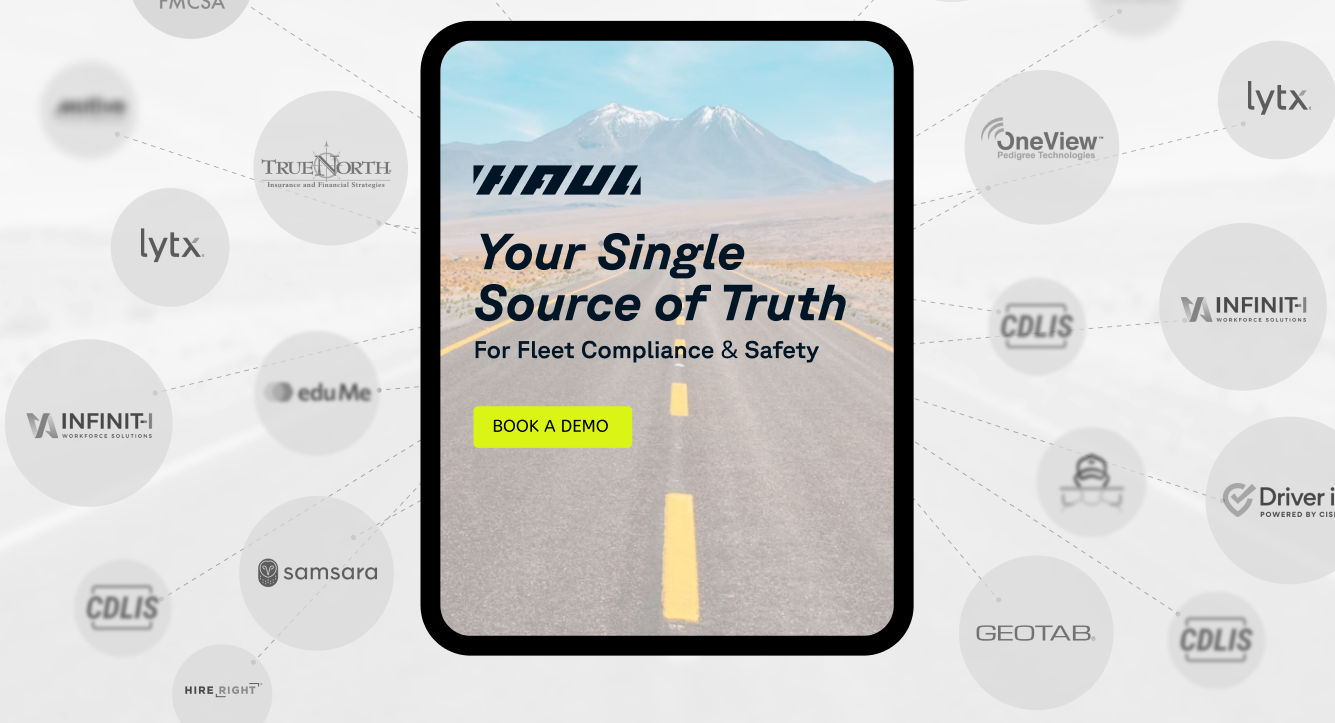Understanding Commercial Truck Insurance Requirements Explained

Navigating the world of commercial truck insurance can be a daunting task.
Understanding the requirements, the variations, and the implications of non-compliance is crucial.

by Alexander Grey (https://unsplash.com/@sharonmccutcheon)
This article aims to demystify the complexities of commercial truck insurance. We'll delve into CDL insurance requirements, box truck insurance requirements, and how these vary by state.
We'll also explore the legal and financial risks of not meeting these requirements.
Finally, we'll discuss how technology can be leveraged for real-time insights and alerts, improving operational efficiency.
Whether you're a fleet manager, a logistics director, or a risk management officer, this guide will provide you with the knowledge you need to ensure your fleet is compliant, safe, and efficient.
The Fundamentals of Commercial Truck Insurance
Commercial truck insurance is a critical aspect of fleet management.
It's designed to protect your company from financial losses due to accidents, theft, or other unforeseen incidents.
There are several types of commercial truck insurance policies available. These include liability insurance, physical damage insurance, and cargo insurance, among others.
Each type of insurance offers different coverage, and the choice depends on your specific needs and risks.
Here are some common types of commercial truck insurance:
- Liability Insurance: Covers damages to other people's property and bodily injury to others in an accident where you're at fault.
- Physical Damage Insurance: Covers damages to your own vehicle in an accident, regardless of fault.
- Cargo Insurance: Covers loss or damage to the cargo you're hauling.
CDL Insurance Requirements
If you're a commercial driver's license (CDL) holder, you're required to have certain insurance coverages.
These requirements are designed to protect you, your company, and the public in case of an accident.
The exact requirements can vary, but typically include liability insurance and cargo insurance.

Box Truck Insurance Requirements
Box truck insurance requirements can differ from other commercial vehicles.
This is due to the unique risks associated with box trucks, such as their size and the nature of the cargo they carry.
As with CDL insurance, box truck insurance typically includes liability, physical damage, and cargo insurance.
Commercial Truck Insurance Variations by State
Commercial truck insurance requirements can vary significantly by state.
Each state has its own minimum coverage requirements for commercial vehicles.

by Dariusz Sankowski (https://unsplash.com/@dariuszsankowski)
For example, some states may require higher liability coverage limits than others.
Here are a few examples:
- California: Minimum liability coverage of $750,000 for trucks over 10,000 pounds.
- Texas: Minimum liability coverage of $500,000 for trucks over 26,000 pounds.
- New York: Minimum liability coverage of $1,000,000 for trucks transporting hazardous materials.
It's crucial to understand your state's requirements to ensure your fleet is adequately insured.
The Legal and Financial Implications of Non-Compliance
Failing to meet commercial truck insurance requirements can have serious consequences.
Legally, non-compliance can result in fines, penalties, and even the suspension of your operating authority.
Financially, it can leave your company exposed to significant costs in the event of an accident or other incident.
Understanding the Risks of Inadequate Coverage
Inadequate insurance coverage can be just as risky as non-compliance.
If your coverage limits are too low, you may end up paying out-of-pocket for damages or injuries that exceed those limits.
This can put a significant strain on your company's finances and potentially jeopardize your operations.
Leveraging Technology for Compliance and Efficiency
In today's digital age, technology plays a crucial role in managing commercial truck insurance requirements.
Advanced software solutions can help streamline the process of tracking and maintaining insurance coverage across your fleet.
These tools can also assist in managing documentation, ensuring compliance, and reducing the risk of costly errors or oversights.

Real-Time Data Integration and Alerts
Real-time data integration can provide valuable insights into your fleet's insurance needs.
By integrating data from various sources, such as telematics and GPS tracking, you can gain a comprehensive view of your fleet's operations.
This can help you identify potential risks, stay updated on insurance renewals, and respond quickly to changes in requirements.
Best Practices for Fleet Managers and Logistics Directors
As a fleet manager or logistics director, understanding commercial truck insurance requirements is crucial.
You need to ensure that your fleet is adequately insured, not only to comply with the law but also to protect your company from financial risks.
Here are some best practices to consider:
- Regularly review your insurance policies to ensure they meet your current needs.
- Communicate effectively with your insurance provider to understand your coverage options.
- Leverage technology to manage insurance documentation and compliance.
- Foster a culture of safety within your fleet to potentially lower insurance premiums.
Ensuring Adequate Insurance Coverage
Ensuring adequate insurance coverage for your fleet is a critical aspect of risk management.
This involves understanding the different types of commercial truck insurance policies available and choosing the ones that best fit your fleet's needs.
Remember, the cheapest policy may not always provide the best coverage, so it's important to balance cost with the level of protection your fleet requires.
Improving Transparency and Fostering Partnerships
Transparency in insurance-related operations can help avoid misunderstandings and disputes.
This involves clearly communicating insurance requirements to all stakeholders in the fleet, including drivers, maintenance staff, and management.
Fostering strong partnerships with your insurance providers can also lead to customized coverage solutions that better meet your fleet's unique needs.
Conclusion: Balancing Cost and Coverage for Optimal Fleet Management
In conclusion, understanding commercial truck insurance requirements is a complex but essential aspect of fleet management.
Striking a balance between cost and coverage is key. While it's important to manage expenses, skimping on insurance can lead to significant financial risks in the event of accidents or other incidents.
By leveraging technology, fostering partnerships, and maintaining a culture of safety, you can ensure your fleet is adequately insured while also improving operational efficiency. Remember, the goal is not just compliance, but also protecting your company's assets and reputation.


